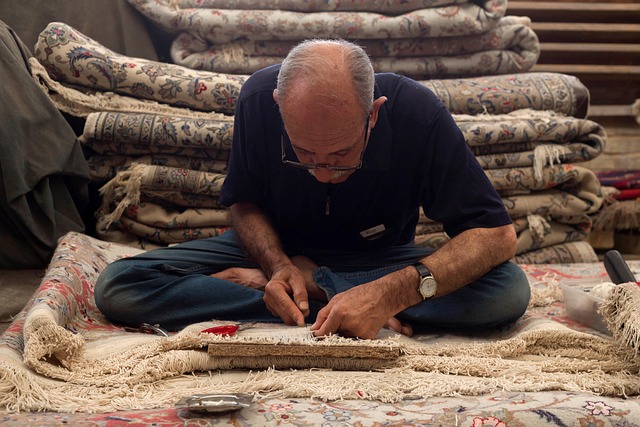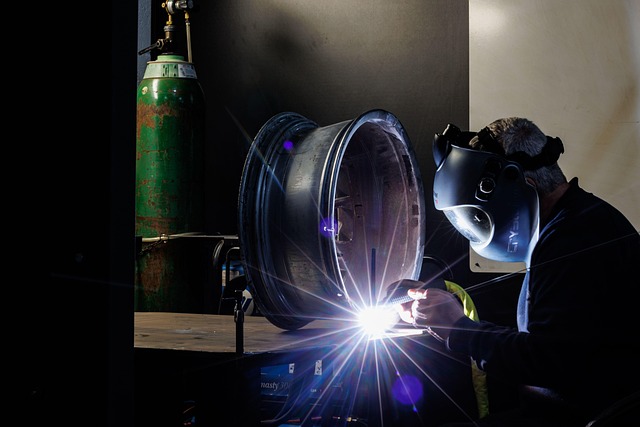Loose carpet edges in Denver homes and businesses result from foot traffic, temperature/humidity changes, area rugs, and improper installation. Effective Carpet Repair Denver services address these issues with tailored solutions. Minor repairs can be done with scissors or hot glue guns, while larger issues require specialized kits and tools like carpet stretchers. Regular maintenance, including prompt addressing of loose edges and protective measures, extends carpet lifespan, reducing the need for costly Carpet Repair Denver services.
“Keep your Denver home looking neat and tidy with our comprehensive guide to fixing loose carpet edges. We explore the common causes behind this issue, from foot traffic to pet wear and tear, all while offering a range of effective tools and techniques for DIY repairs. Learn a step-by-step process to securely reattach your carpet, ensuring a professional finish. Additionally, discover prevention strategies to guard against future damage, making your carpet repair efforts in Denver that much easier.”
- Understanding Common Causes of Loose Carpet Edges
- Tools and Techniques for Effective Carpet Repair
- Step-by-Step Guide to Securing Carpet Edges
- Preventing Future Carpet Edge Damage in Denver Homes
Understanding Common Causes of Loose Carpet Edges

Loose carpet edges are a common issue in homes and businesses across Denver and beyond. Understanding the causes behind this problem is the first step in addressing it effectively. One of the primary reasons for loose carpet edges is foot traffic, especially in high-traffic areas like hallways or entryways where shoes can easily dislodge the fibers. Over time, this consistent movement leads to fraying and eventual loss of adhesion, causing the carpet to lift from its underlayment.
Another factor contributing to loose carpet edges is the natural expansion and contraction of materials due to changes in temperature and humidity. Area rugs in Denver, for instance, are particularly susceptible during seasonal transitions when sudden temperature drops can cause the rug to contract, pulling away from the edges of the room. Similarly, carpet ripples repair in Colorado often arises from improper installation or poor-quality adhesives used during the initial laying of the carpet. Proper Carpet Repair Denver services address these issues by offering tailored solutions to restore the integrity and aesthetics of your flooring.
Tools and Techniques for Effective Carpet Repair

When it comes to fixing loose carpet edges in Denver, the right tools and techniques are key. For minor repairs, a simple set of scissors or a utility knife can be sufficient for trimming and securing frayed edges. Hot glue guns are also popular choices as they provide a quick and effective way to reattach carpet fibers. For larger issues like torn carpets in Denver, consider using specialized repair kits that often include adhesive tapes and patches designed specifically for commercial carpet repair Denver.
Professionals in commercial carpet repair Denver recommend a systematic approach. First, identify the extent of the damage—is it a single loose edge or multiple areas requiring fix torn carpet Denver? Next, prepare the surface by cleaning and drying the affected area. This ensures that the adhesive will adhere properly. Depending on the severity, you might need to use specialized tools like carpet stretchers or power staplers for more permanent solutions. Remember, proper preparation and using the right techniques can significantly extend the lifespan of your carpet, saving you from frequent Carpet Denver repairs in the future.
Step-by-Step Guide to Securing Carpet Edges

Fixing loose carpet edges is a common Carpet Repair Denver task for both homeowners and rental property managers. Here’s a step-by-step guide to securing your carpet edges, keeping your floors looking neat and professional:
1. Identify Loose Edges: Begin by thoroughly inspecting your carpet for any frayed, unattached, or loose edges. This could be caused by normal wear and tear, foot traffic, or even improper installation. Focus on high-traffic areas like hallways, entryways, and stairs where damage tends to accumulate faster.
2. Prepare the Area: Once you’ve identified the loose edges, clear a small section of floor around them. Remove any furniture, toys, or debris that might get in the way during the repair process. For larger areas with multiple loose edges, consider using tape to temporarily hold down other sections for easier access and to prevent further damage.
3. Trim Excess Carpet: Using carpet scissors or a utility knife, carefully cut away the frayed or loose edge of the carpet. Make sure to trim it straight, creating a clean and even surface. This step is crucial in ensuring that your repair tape or adhesive adheres properly.
4. Clean the Edge: Before securing the edge, thoroughly clean the area to remove any dirt, dust, or debris. A vacuum cleaner with a brush attachment can be used for this purpose. Cleaning ensures better bonding between the carpet and the repair material, making it more durable.
5. Apply Adhesive or Tape: There are various types of adhesives and tapes available for Carpet Repair Denver. For smaller edges, a strong adhesive tape designed specifically for carpets is ideal. Larger areas may require a carpet glue that provides a more permanent solution. Follow the manufacturer’s instructions for application, ensuring even coverage.
6. Press and Secure: After applying the adhesive or tape, quickly press down on the loose edge to ensure good contact. For tape, hold it in place for several seconds until it sets. If using glue, follow the recommended drying time before walking on or moving furniture over the repaired area (usually 24-48 hours).
7. Patch and Finish: For noticeable holes or damage, consider patching the area with a carpet patch repair kit available at local hardware stores. This involves cutting a piece of carpet to fit the hole and then securing it with adhesive. Once dry, trim any excess and blend the edges for a seamless finish, similar to what Colorado Spring carpet repairs experts do.
Preventing Future Carpet Edge Damage in Denver Homes

Preventing future damage to your home’s carpet edges is an essential aspect of maintaining a beautiful and functional interior space in Denver. Regular maintenance can significantly extend the life of your carpet, saving you from costly Carpet Repair Denver services. One effective strategy is to address any loose or frayed edges promptly. These issues often arise due to foot traffic, furniture movement, or even pet activity. By trimming or re-securing these edges, you can prevent further damage and keep your carpet looking neat.
Additionally, considering the installation of Stair Runners Denver or Wall Tiles Denver can offer extra protection, especially in high-traffic areas. These accessories not only enhance the aesthetic appeal but also act as a barrier against ripples and waves that might form due to footfall. Regular cleaning and spot treatment using appropriate carpet care products will further contribute to maintaining the integrity of your carpet edges, ensuring they remain secure for years to come.
Whether caused by foot traffic, aging, or pet damage, loose carpet edges are a common issue in Denver homes. Fortunately, understanding the problem’s root causes and employing effective tools and techniques can help you efficiently address these issues. By following our step-by-step guide to securing carpet edges, you’ll restore your Denver home’s floor to its former glory. Moreover, by implementing preventive measures, you can minimize future carpet edge damage, ensuring a longer lifespan for your carpets and saving you from costly Carpet Repair Denver services.
